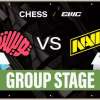The sports-betting world offers countless bankroll-management methods, but few focus on turbo-charging your balance. The “2-6” strategy is a rare guest among familiar flats and ladders. It fuses the mathematical discipline of progressive systems with the emotional dynamism of the Martingale, letting a bettor lock in profit over a short stretch. Let’s explore how the approach works, where its strengths and weak spots hide, and why you may want a calculator and nerves of steel close at hand.
Where Did the “2-6” Formula Come From
The method migrated to Europe from the United States, where baseball and basketball enthusiasts had long experimented with progressive staking. The logic is simple: in a block of six consecutive wagers, just two wins are enough to recoup previous losses or turn a profit. On one hand it resembles a Martingale — the stake grows after every defeat. On the other, the climb is gentler than in a classic Martingale, so the risk of instant bankruptcy is lower.
How It Works: Six Shots — Two Hits
The bettor divides the journey into cycles of six wagers. The moment two successful outcomes appear, a new cycle starts. If the required pair of wins never lands, the cycle still resets: after the sixth losing bet you jump back to step one. To keep the math straight, every wager must carry odds of 2.0 or higher. That price point lets you cover earlier losses and lock in profit after the second win.
Advantages: When Math Is on Your Side
- Accelerated bankroll growth. Two wins out of six at odds 2+ can meaningfully pad your balance, especially if they arrive early.
- Higher probability than an accumulator. An acca needs every leg to hit; here only two outcomes must succeed.
- Psychological comfort. You know the cycle ends after six attempts, so losses are capped in advance.
Drawbacks: What Happens if the Run Goes Wrong
- Sensitivity to long losing streaks. A prolonged cold spell drains the bankroll faster than you expect, even with moderate odds.
- Modest reward for the risk taken. Adding 10–15 % to your balance may require staking far larger sums in the late stages of a cycle.
- Order of wins matters. Two victories on steps five and six pay less than back-to-back wins at the start.
Step-By-Step Algorithm: How Much to Bet and When to Double
- Set the unit. The base stake equals 1–2 % of your bankroll (up to 5 % if you can stomach sharp swings).
- Steps one to three. Stake doubles each time: 1 × N → 2 × N → 4 × N.
- Steps four to six. Add two units to the previous stake: 6 × N → 8 × N → 10 × N.
- Lock the result. As soon as two wins land in a cycle, reset the counter; the stake returns to one unit.
Jumping a step early or tinkering with the stake size destroys the strategy’s mathematical foundation.
Practical Calculator: Two Scenarios for a 10 000 $ Bankroll
Scenario No 1 — Favorable Win Distribution
- 500 $ (odds 2.20) — loss → −500
- 1 000 $ (odds 2.00) — loss → −1 500
- 2 000 $ (odds 2.17) — win → +840
- 3 000 $ (odds 2.08) — loss → −2 160
- 4 000 $ (odds 2.10) — win → +2 240
The cycle closes, netting +2 240 $. To earn that profit, you cycled 10.5 thousand $ through the cashier.
Scenario No 2 — “Unlucky” Wins
- 500 $ (odds 2.20) — loss → −500
- 1 000 $ (odds 2.00) — win → +500
- 2 000 $ (odds 2.17) — loss → −1 500
- 3 000 $ (odds 2.08) — loss → −4 500
- 4 000 $ (odds 2.10) — win → −100
The cycle ends, but the balance sits 100 $ in the red. Win order matters: if the first five bets miss, the sixth can’t physically plug the hole. That’s why a 1–2 % unit strikes the best balance between profit and survivability.
Seven Tips to Survive Turbulence
- Stick to odds 2.0+. Lower prices break the cycle’s economics; higher ones slash your hit rate.
- Target two-way markets. Tennis, volleyball, over/under totals, and no-draw handicaps push theoretical accuracy toward 50 %.
- Don’t rush. Wait for the previous bet to settle; late twists can flip a match on its head.
- Don’t chase 3.0+ odds. Big prices tempt, but every extra tick cuts your chances.
- Park your emotions. After three losses, neither slash nor triple your stake out of revenge.
- Use bonuses and free bets. A free wager can serve as an extra life when a cycle starts poorly.
- Analyze, don’t guess. A 50 %+ strike rate comes from cool match selection and hunting for value lines.
Which Markets Suit “2-6”: Hunting for 2.0+ Odds
Seasoned bettors advise choosing events where the bookmaker’s margin is lean and the two-way odds hover near 2.00. Live totals in basketball, handicaps in hockey, or set-winner bets in tennis often fit the bill. Just make sure the line isn’t strangled by commission; otherwise, even two wins won’t offset long-term losses.
Risk-Reward Balance: Is It Worth the Gamble?
The “2-6” strategy is a financial sprint, not a marathon. It offers a chance to grow a small bankroll quickly, yet demands iron discipline and readiness for extended drawdowns. For newcomers, the model feels nerve-wracking: rising stakes after a couple of defeats weigh on the psyche. But for an experienced player who can wait for odds 2.0+ and analyze matches, “2-6” becomes a powerful lever: risks stay contained, upside is tangible, and the bankroll doesn’t vaporize overnight as it can in a classic Martingale.
If you can treat money coolly, accept unavoidable losing streaks, and follow the staking table to the letter, “2-6” adds a valuable instrument to your arsenal. Even the flashiest method is only a shell for common sense: meticulous event analysis, sober odds selection, and a moderate unit perform miracles far more often than any pure math recipe. Keep your composure, and may two of six hits be the ones that deliver the profit you deserve!






